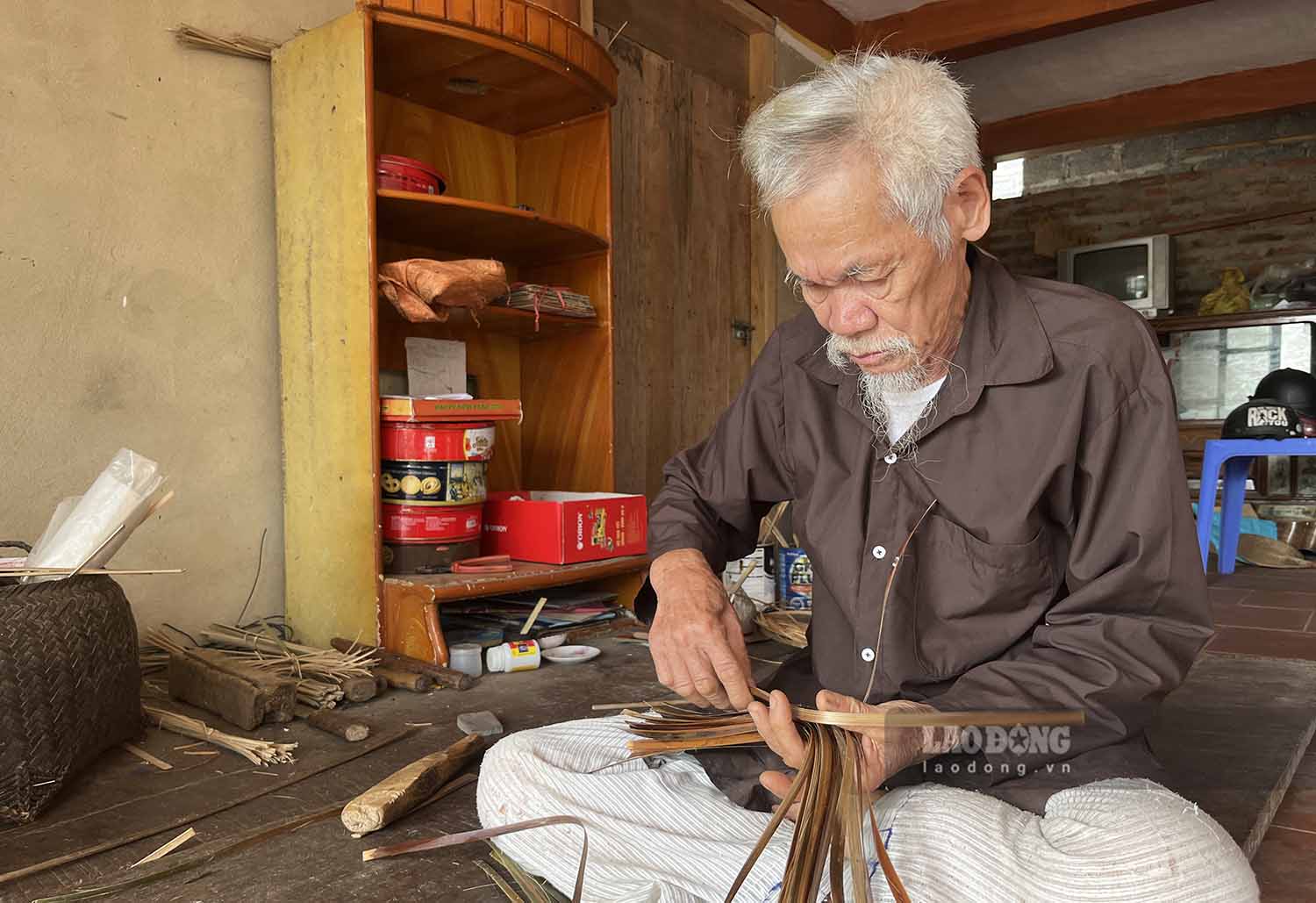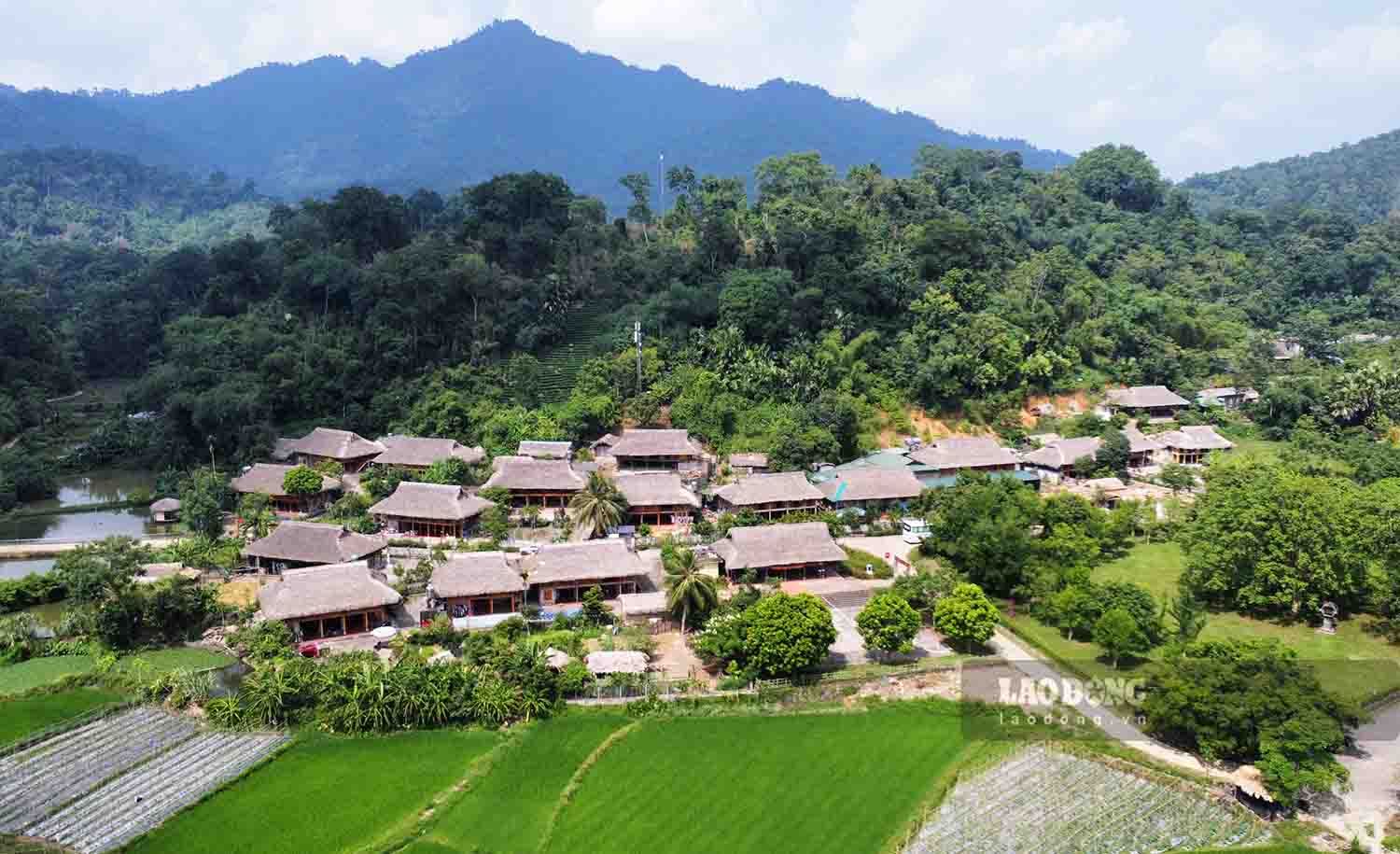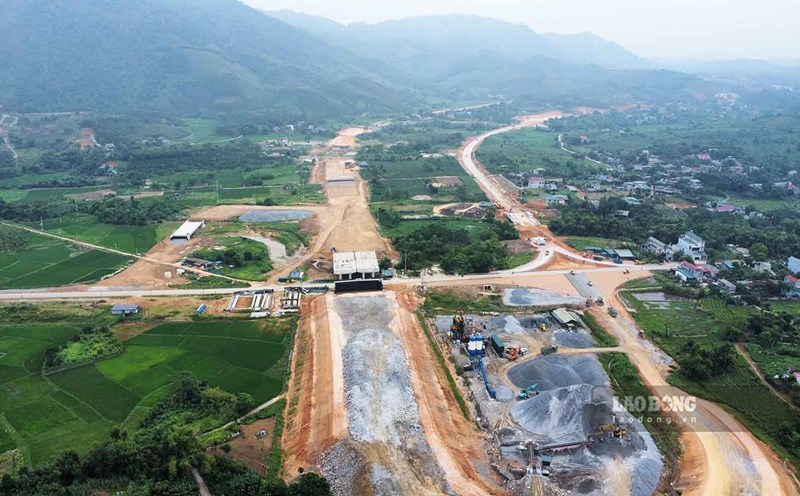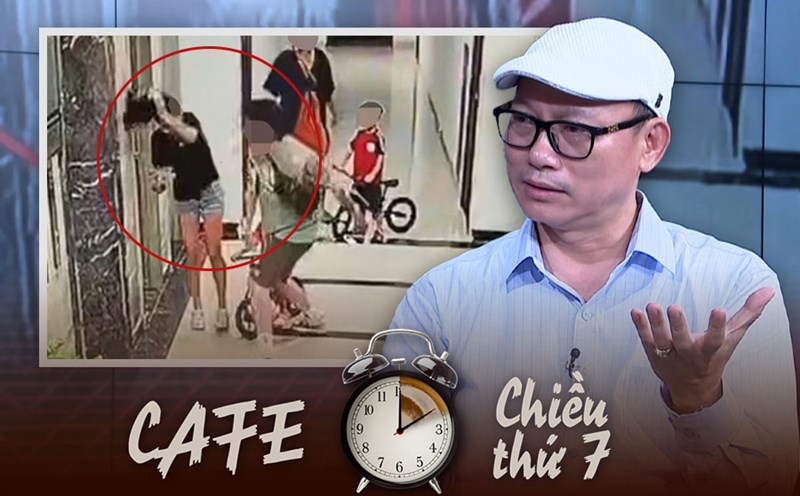This year, at the age of 89, in Tan Trao village, Mr. Hoang Ngoc is still known as a "historic keeper" because even at the age of near and far, his hands trembling and his eyes blurred, every time he tells stories about Uncle Ho and the historic August, Mr. Ngoc is strangely clear-minded.
At the time of the National Assembly of Tan Trao (August 1945), Mr. Ngoc was only a 9-year-old boy, but the atmosphere and images of the congress days were unforgettable.
"At that time, the villagers had never seen so many people, all they knew was that there were congresses and revolutionary cadres from all over. From children to the elderly, everyone is told to be vigilant, strangers say they don't know anything when asking," Mr. Ngoc recalled.
Pointing to Tan Trao communal house, Mr. Ngoc said: "When the congress took place, the communal house was still simple, not as spacious as it is now, but there was still enough space for a few dozen people to sit together. We only know that we are officials in discussing national consulates, but how specifically, we do not know".

Then when the congress was successful, the villagers sent a congratulatory group to congratulate the elderly, young people, women, and teenagers with rice, chicken, and a cow to congratulate. The Hoang Ngoc boy was one of the four children chosen at that time.
"Uncle Ho thanks the villagers for supporting the revolution, he looks down at our children and grandchildren, seeing them all with hammocks, torn clothes, and patchwork. He approached and rubbed his head and said: How should we make the children here have food and clothes to wear and study," Mr. Hoang Ngoc emotionally recounted.
Those who witnessed the National Assembly of Tan Trao in Tan Trao village now have no one except for Mr. Ngoc. It was not until later that the people of Tan Trao learned that the event had made an important contribution to the victory of the August Revolution.
On August 16 and 17, 1945 at Tan Trao communal house, Son Duong, Tuyen Quang province, under the call of President Ho Chi Minh, more than 60 outstanding delegates representing religious and ethnic groups across the country gathered to discuss and decide on important issues of the country.
The Congress also stipulated that the national flag is a red flag with five yellow stars; the national anthem is the song "Marching Song" (by musician Van Cao) and sent to the Vietnam Committee for National Liberation, the Provisional Government chaired by leader Ho Chi Minh and has a Standing Committee of 5 people: Ho Chi Minh, Tran Huy Lieu, Pham Van Dong, Nguyen Luong Bang and Duong Duc Hien.

In the urgent situation of the revolution, the Committee for National Liberation assigned the Command Committee to the Committee for October 1st to take action.
The success of the National Assembly of Tan Trao Congress is the creativity of our Party and President Ho Chi Minh in gathering and uniting the strength of the entire nation. The Congress was called with the sole goal of national liberation and received the support of 100% of the delegates attending, even though at that time we had many political parties, ethnic groups and social classes.
According to Dr. Colonel Le Thanh Bai - Deputy Director of the Vietnam Institute of Strategy and History of National Defense, the Tan Trao National Assembly is considered the second "Dien Hong Conference" in the history of the nation, and also has the meaning of a provisional National Assembly or "a pre-national Assembly".
"The event of the National Assembly of Tan Trao City Congress builds the first legal basis for the birth of our country's democratic Republican regime - the new regime of the people, by the people and for the people.
The resolutions of the Congress have formed the foundation for the uprising in localities, for the General Uprising to win, regain power and serve as a basis for building a State immediately after the revolution's success. This is a typical model of real democracy, when decisions are issued based on the will and aspirations of the entire nation", said Dr. Colonel Le Thanh Bai.











